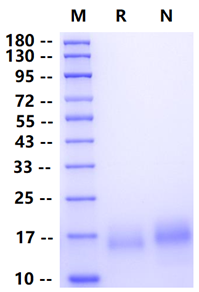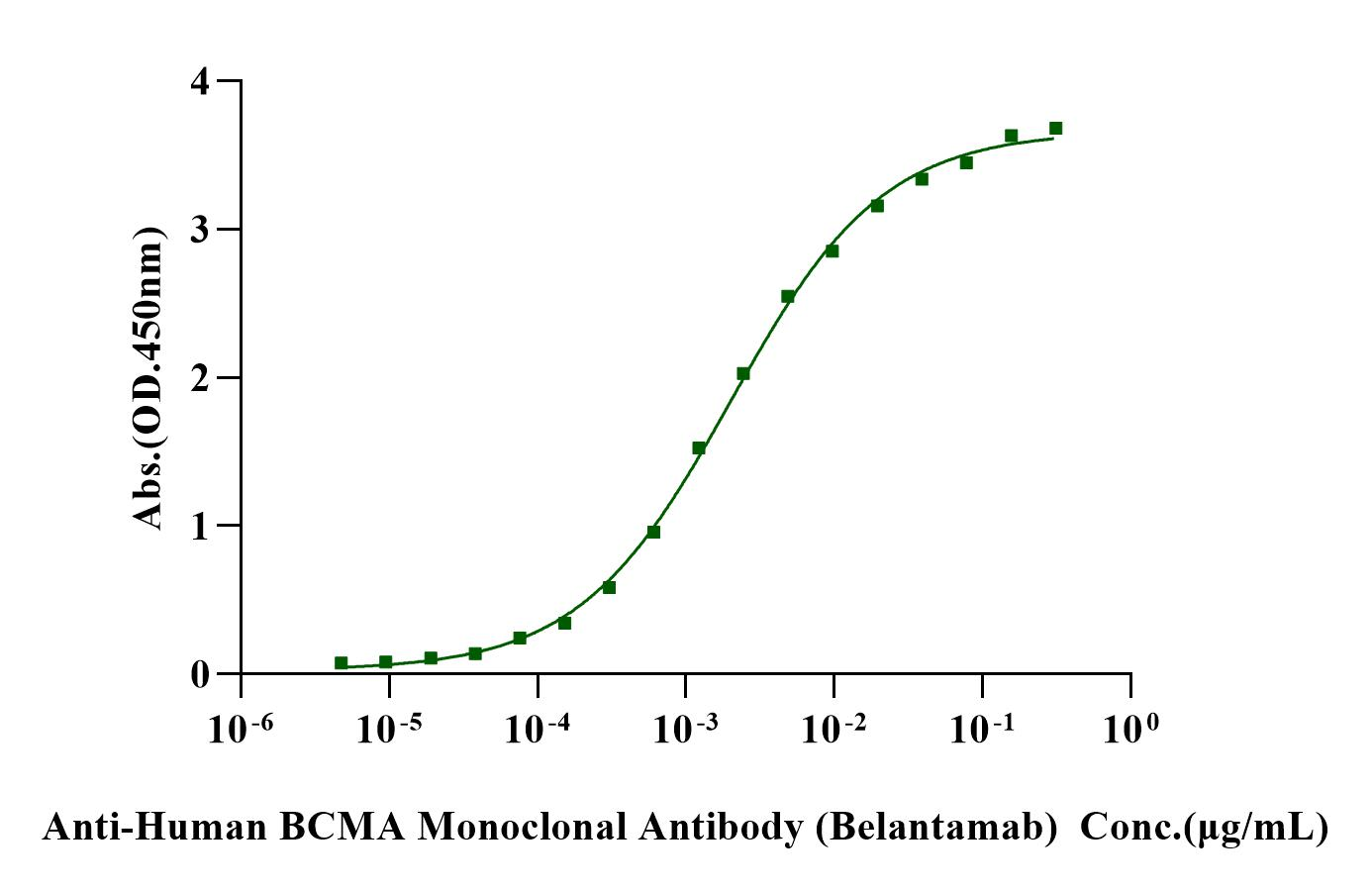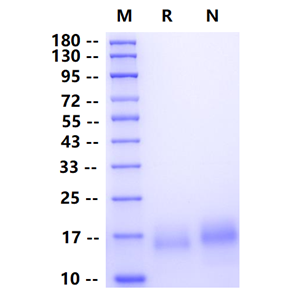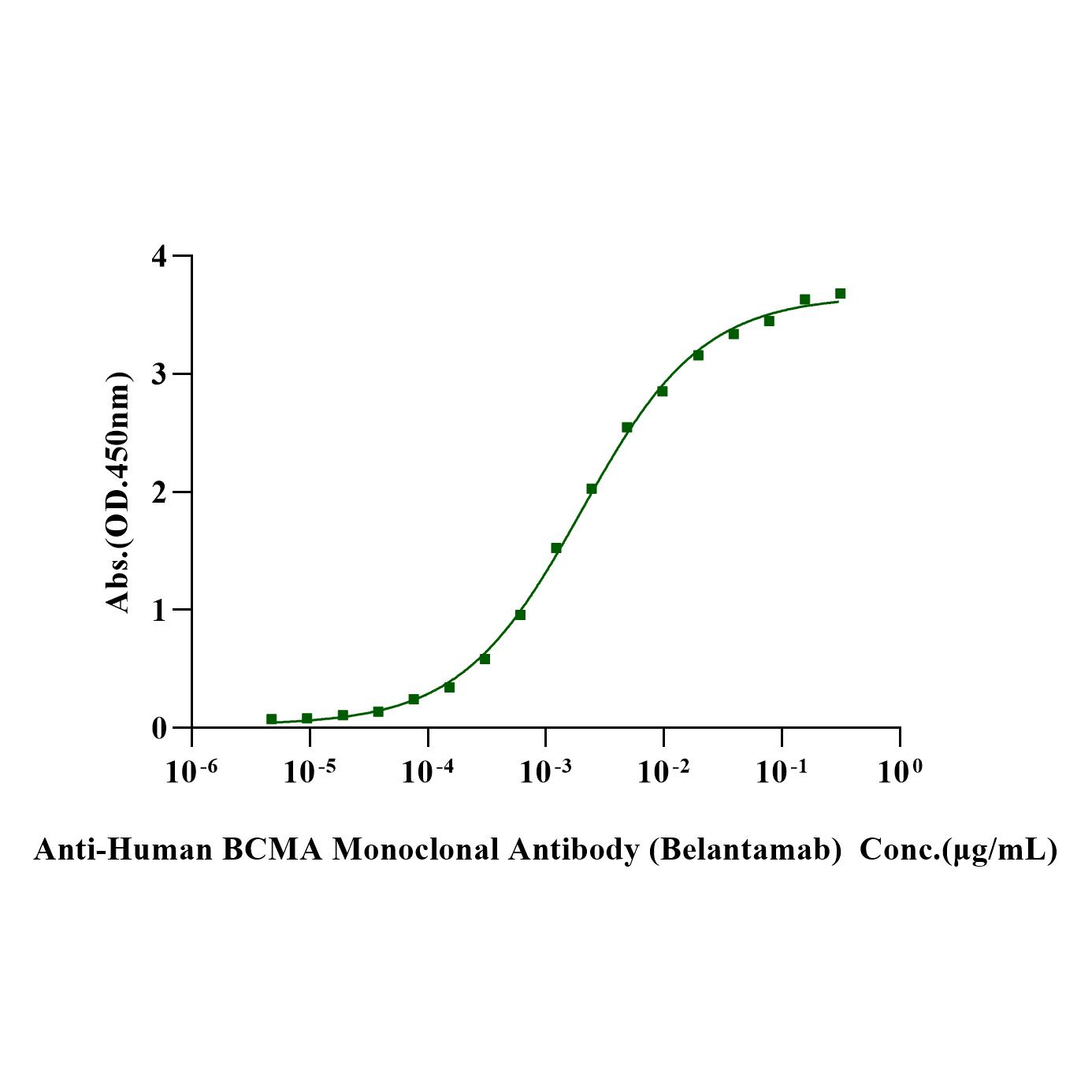1μg (R: reducing conditions, N: non-reducing conditions).
Product Details
Product Details
Product Specification
| Species | Human |
| Antigen | BCMA |
| Synonyms | TNFRSF17, CD269, BCM, BCMA |
| Accession | Q02223-1 |
| Amino Acid Sequence | Met1-Ala54, with C-terminal His&Avi Tag MLQMAGQCSQNEYFDSLLHACIPCQLRCSSNTPPLTCQRYCNASVTNSVKGTNAGGGSHHHHHHHHGLNDIFEAQKIEWHE |
| Expression System | HEK293 |
| Molecular Weight | 15-17kDa |
| Purity | >95% by SDS-PAGE |
| Endotoxin | <0.1EU/μg |
| Conjugation | Biotin |
| Tag | Avi Tag, His Tag |
| Physical Appearance | Lyophilized Powder |
| Storage Buffer | PBS, pH7.4 |
| Reconstitution | Reconstitute at 0.1-1 mg/ml according to the size in ultrapure water after rapid centrifugation. |
| Stability & Storage | · 12 months from date of receipt, lyophilized powder stored at -20 to -80℃. · 3 months, -20 to -80℃ under sterile conditions after reconstitution. · 1 week, 2 to 8℃ under sterile conditions after reconstitution. · Please avoid repeated freeze-thaw cycles. |
| Reference | 1. Nina Shah, Ajai Chari, Emma Scott, Khalid Mezzi & Saad Z. Usmani: B-cell maturation antigen (BCMA) in multiple myeloma: rationale for targeting and current therapeutic approaches, Leukemia volume 34, pages985-1005 (2020). |
Background
BCMA (The B-cell maturation antigen), also designated as TNFRSF17, belongs to the tumor necrosis factor receptor superfamily, which is a family of cytokine receptors. BCMA is encoded by a 2.92-kb TNFRSF17 gene located on the short arm of chromosome 16 (16p13.13) and composed of 3 exons separated by 2 introns. There are four natural splice variants of human BCMA that present with different receptor binding affinities, membrane-anchoring ability, and intracellular domain signaling. BCMA main ligands are the cytokines B-cell activating factor and a proliferation-inducing ligand. The interaction between BCMA and its ligands activates the NF-κB signaling pathway that plays an important role in B-cell proliferation and maturation and is essential for the survival of long-lived bone marrow plasma cells. BCMA is expressed preferentially on mature B cells and has minimal expression on hematopoietic stem cells or other cell types. The BCMA has emerged as a central target in multiple myeloma (MM). In preclinical studies, overexpression of BCMA and the interaction with is ligand, a proliferation-inducing ligand (APRIL), was found to promote MM progression in vivo and augment MM cell growth and survival through induction of multiple signaling cascades, including protein kinase B (AKT), MAPK, and nuclear factor (NF)-κB. Additionally, BCMA has been shown to be solubilized at high levels in serum of patients with MM (sBCMA). This form of sBCMA binds to B-cell activating factor (BAFF). The role of BAFF is to stimulate normal B-cell and plasma cell development; however, this functioning is prevented when it is bound by BCMA in the serum, thereby leading to decreased polyclonal immunoglobulin levels in patients with MM.
Picture
Picture
SDS-PAGE

ELISA

Immobilized Biotinylated BCMA His&Avi Tag, Human (Cat. No. UA010542) at 2 μg/mL on Streptavidin precoated (0.5μg/well) plate, can bind Anti-Human BCMA Monoclonal Antibody (Belantamab) with EC50 of 1.81-2.25 ng/ml.




